While the benefits of intra-ocular lens replacement surgery (commonly performed to correct cataracts) are significant – astonishingly sharp color perception, 20/20 or approximate vision – one minor draw-back from it is the loss of close focus vision. In my own case, even with the fact that the lenses implanted into my eyes are flexible and allow me to adjust for distance focusing nearly as well as I did with my original lenses, since the surgery I have had difficulty reading small print or distinguishing fine details in anything closer to my eyes than twelve to eighteen inches away (depending upon what specifically I’m viewing). Because of this, I carry “cheaters,” low magnification level reading glasses, on a cord around my neck for easy accessibility when close examination of anything is required.
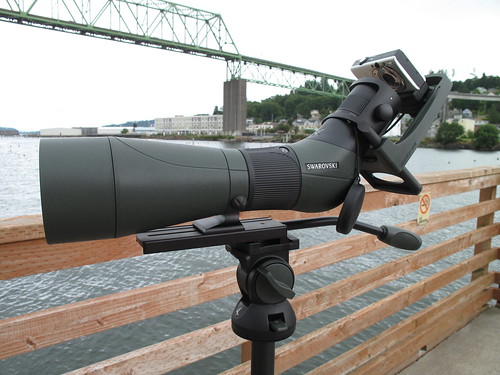
During the case of ordinary daily life this is not a significant issue; however when I practice digiscoping, which in the way I originally learned how to do it requires me to adjust the image of the scope and camera combination using the viewing screen on the back of the camera (my digiscoping rig is depicted above), my impaired close focus vision sometimes becomes an impediment. Even with reading glasses, achieving a razor sharp focus using only a 2.5 inch electronic screen can be a challenge – particularly during mid-day conditions when the ambient light causes glare on the surface of the camera’s viewing screen. Could I only use my DSLR for digiscoping and thus use the view finder for assessment of the image this problem would be solved. But how?
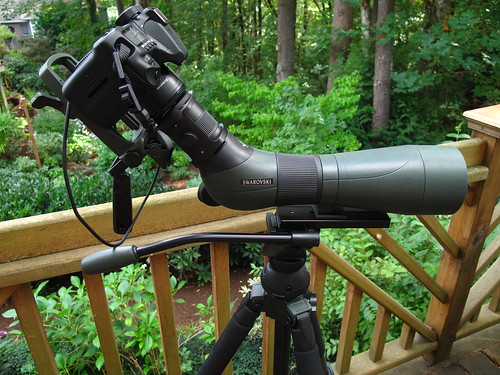
I recently mentioned my ophthalmic challenge to my friend Clay Taylor, Swarovski’s master digiscoper, while we were both attending the Midwest Birding Symposium is Lakeside, Ohio. Not only a long-time friend but also one of my earliest nature observation and digiscoping mentors, Clay, as he has done countless times in the past, once again provided me with the solution. Use the Swarovski UCA in combination with my Canon EOS 40D camera body and a short prime lens (the one I initially tried due to its affordability being the Canon EF 50mm f/1.8 II lens – just over $100.00 at my regular photographic supply retailer: Pro Photo Supply).
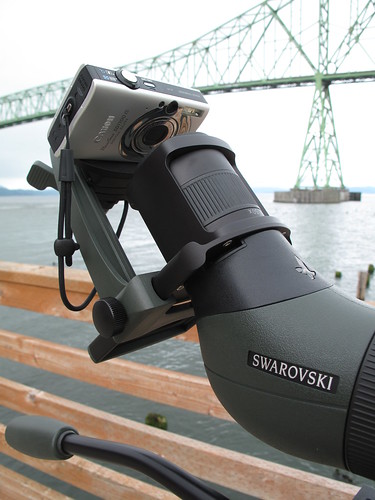
As illustrated in the above image, when using a small digital camera such as my Canon PowerShot SD1100 IS, the Swarovski UCA is configured with the attachment housing (that slides over and attaches to the spotting scope’s eyepiece) positioned toward the camera. This allows the overall UCA to be as compact as possible for ease in carrying it.
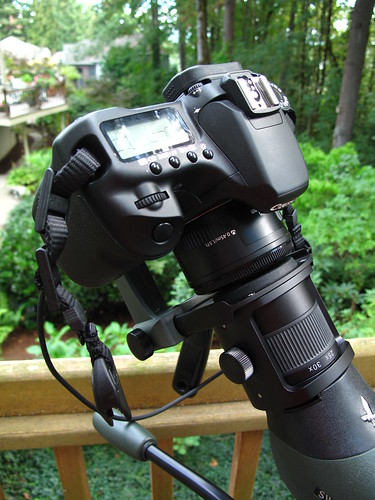
Thanks to the UCA’s remarkable versatility, the attachment housing can also be reversed, leaving substantial room on the mounting platform for a DSLR camera with a lens attached (or even a digital video camera if desired) to be positioned behind the spotting scope’s eyepiece.
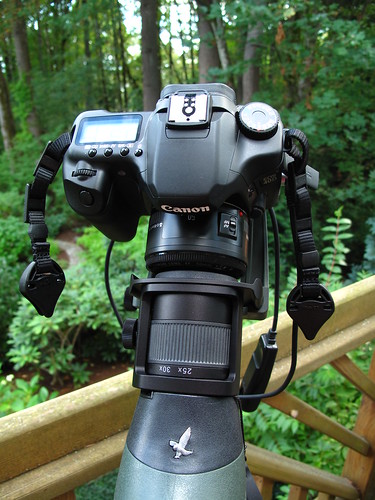
Because of the Swarovski UCA’s “skeletonized” attachment housing design, there is ample room to reach and control a zoom eyepiece (in the case of the images above, the 25-50x W model).
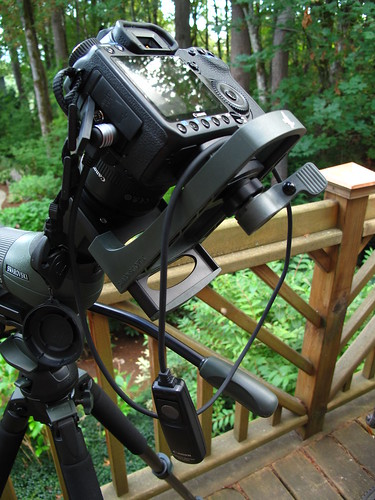
As the level of magnification in digiscoping is rather high, it is best to use either a remote shutter release or a time-delay release to capture the image. With my pocket digital, there are no compatible remote releases so I rely upon a two second delay. However just as I do in most cases when I mount my DSLR on a tripod, I used a digital cable release (in this case the Canon Remote Switch RS-80N3) to capture the image – a technique that allows a much faster response time when digiscoping moving subjects.
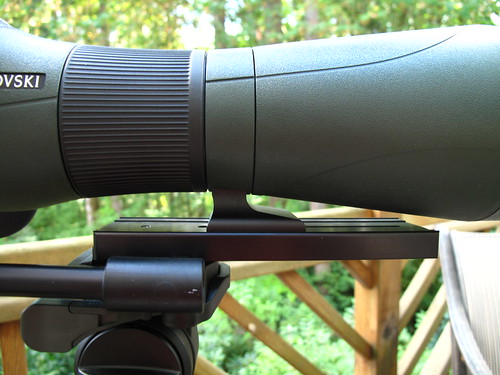
Of course, with the larger mass of a full DSLR camera at one end of my Swarovski ATS 80 HD spotting scope, the overall balance on the tripod needed to be adjusted. Fortunately, I have long used Swarovski’s own balance rail in combination with their CT 101 tripod. This allows for the position of the spotting scope to be moved further forward to compensate for additional weight being added to one end of the spotting scope (such as in digiscoping).
Of course, like almost all new digiscoping discoveries, there is still more exploration to be done. While the Canon EF 50mm f/1.8 II lens is a great as well as an affordable choice for this application, it has one unfortunate draw-back: when focused, the length of the lens changes according to the focal length required. Because of this and the close proximity to the spotting scope’s eyepiece that is required, the auto-focus feature of the lens must be turned to “manual.” Thus my next quest is to discover a similar lens that focuses entirely internally; Canon’s other well known 50mm lens, the EF 50mm f/1.4 does not, however the EF 35mm f/2.0 does. Experiments with my own Canon EF 28mm f/1.8 USM lens showed it to not have sufficient focal length to remove vignetting from the image recorded. Will the 35mm have a sufficient focal length to do the trick?
Stay tuned…
